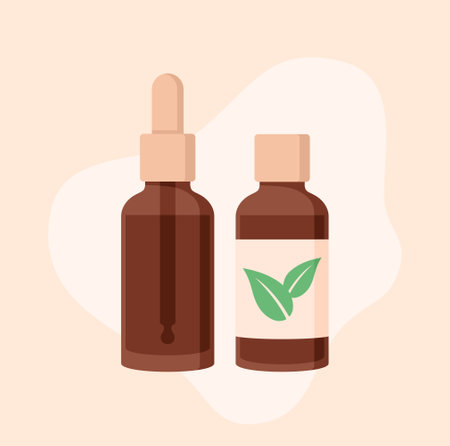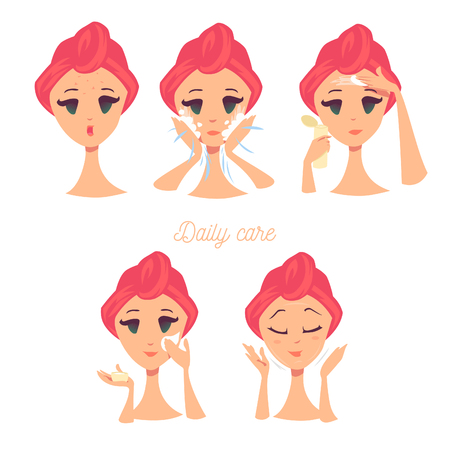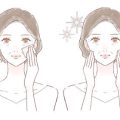Understanding Aging Skin Needs
As we move through our 30s, 40s, and beyond, it’s totally normal to notice changes in our skin. You might see new fine lines around your eyes or mouth, feel that your skin gets drier in the winter, or realize it isn’t as bouncy as it used to be. These shifts are a natural part of aging and happen to everyone.
How Does Skin Change As We Age?
Let’s break down what’s happening:
| Age Group | Common Skin Changes | Main Concerns |
|---|---|---|
| 30s | Slight dryness, early fine lines, dullness | Prevention, hydration, first signs of aging |
| 40s | More noticeable lines, loss of firmness, uneven tone | Elasticity, moisture retention, firmness |
| 50s & Beyond | Thinner skin, deeper wrinkles, increased dryness | Nourishment, barrier repair, deep hydration |
Why Does This Happen?
Our bodies naturally slow down production of collagen and elastin—the proteins that keep skin plump and stretchy. Oil glands also become less active over time, which means your skin can dry out more easily. Environmental factors like sun exposure and pollution can speed up these changes too.
The Role of Moisturizers in Aging Skin Care
This is where moisturizers come in! They help trap water in the skin and support its natural barrier. A good moisturizer can help soften fine lines, improve elasticity, and give your face a smoother look and feel. As your skin matures, using the right moisturizer becomes even more important for keeping it healthy and comfortable—especially if you want to maintain that fresh glow.
2. Key Moisturizing Ingredients for Your 30s
When you hit your 30s, your skin might start to show the first signs of aging—think fine lines, a little dryness, or some dullness after long nights or busy days. The good news? The right moisturizer can make a real difference! Here are the key ingredients you should look for in your moisturizer to keep your skin hydrated, plump, and glowing.
Hyaluronic Acid: Your Skin’s Hydration Hero
Hyaluronic acid is a must-have ingredient if you want youthful-looking skin in your 30s. It acts like a moisture magnet, pulling water into your skin and locking it there. This helps reduce the appearance of fine lines and gives your complexion that dewy, fresh look.
Why You’ll Love It:
- Instant hydration boost
- Makes skin look smoother and plumper
- Works for all skin types—even oily or sensitive
Antioxidants: Vitamin C and Friends
Your 30s are when environmental damage from things like sun exposure and pollution can start to catch up with you. Antioxidants help protect your skin by fighting off these free radicals that cause premature aging. Look for moisturizers with vitamin C—it brightens your skin tone and supports collagen production. Other antioxidants like vitamin E or green tea extract are great too!
Why You’ll Love Them:
- Help even out your skin tone
- Protect against daily environmental stressors
- Add an extra layer of defense to your routine
Lightweight Ceramides: Strengthen Your Skin Barrier
Ceramides are natural lipids (fats) that help keep your skin barrier strong and healthy. In your 30s, you may notice more dryness, especially after using exfoliators or retinoids. Lightweight ceramide-rich moisturizers can help lock in moisture without feeling greasy—a big plus for anyone who doesn’t want heavy creams during the day.
Why You’ll Love Them:
- Restore lost moisture
- Reinforce the protective barrier of your skin
- Perfect for layering under makeup or sunscreen
Quick Guide: Top Ingredients for 30s Moisturizers
| Ingredient | Main Benefit | Best For |
|---|---|---|
| Hyaluronic Acid | Deep hydration & plumping effect | All skin types, especially dry or dehydrated skin |
| Vitamin C (Antioxidant) | Brightening & protection from free radicals | Dull or uneven skin tone, early fine lines |
| Ceramides (Lightweight) | Barrier repair & moisture retention | Sensitive, dry, or combination skin needing light feel |
| Green Tea Extract (Antioxidant) | Soothing & anti-inflammatory benefits | Irritated or redness-prone skin types |
| Vitamin E (Antioxidant) | Nourishing & supports healing process | Mature or stressed-out skin needing extra care |
The right moisturizer with these ingredients will help you keep that healthy glow all through your 30s—and set up good habits for years to come!

3. Essential Ingredients for Your 40s
As you enter your 40s, your skin’s needs change quite a bit. Fine lines can turn into deeper wrinkles, and you might notice more dryness or even a loss of firmness. To help keep your skin looking healthy and youthful, it’s time to upgrade your moisturizer game with powerful ingredients designed for this decade.
Key Ingredients to Look For
| Ingredient | What It Does | Why It’s Great for 40s Skin |
|---|---|---|
| Peptides | Support collagen production and skin repair | Helps smooth out deeper lines and improves skin firmness |
| Retinol Alternatives (like Bakuchiol) | Boost cell turnover without harshness | Targets wrinkles and uneven texture with less irritation than traditional retinol |
| Ceramides & Fatty Acids | Replenish and protect the skin barrier | Keeps moisture in and dryness out as natural oils decrease with age |
| Hyaluronic Acid (High & Low Molecular Weight) | Hydrates on multiple levels in the skin | Tackles both surface dryness and deeper dehydration |
| Antioxidants (like Vitamin E & Niacinamide) | Defend against environmental damage and brighten tone | Counters dullness, supports elasticity, and evens out spots from sun exposure |
| Richer Emollients (like Shea Butter & Squalane) | Nourish and lock in hydration | Adds extra comfort and prevents tightness or flaking common in your 40s |
How to Choose a Moisturizer in Your 40s
- Go for Creams or Balms: Swap lighter lotions for richer textures that give lasting hydration.
- Layer Smartly: Use a serum with peptides or antioxidants under your moisturizer for extra benefits.
- Pace Retinoids: If trying a retinol alternative, start slow—just a few nights per week—to avoid irritation.
- Sensitive? Look for Fragrance-Free: As skin matures, it can get reactive. Fragrance-free formulas are gentler.
Your Skincare Checklist for the 40s:
- A peptide-boosted cream for morning and night use.
- A hydrating serum with hyaluronic acid for daily plumping.
- An antioxidant-rich moisturizer or add-on serum to fight free radicals.
- If you’re new to retinoids, try bakuchiol as a gentler alternative.
- A richer night cream or sleeping mask to seal in moisture while you sleep.
4. Must-Haves for Mature and Advanced-Aging Skin
As we age into our 50s, 60s, and beyond, our skin naturally becomes thinner, drier, and more prone to deep wrinkles and sagging. At this stage, it’s important to choose moisturizers that go beyond basic hydration and deliver intensive support with powerful ingredients. Here’s what your moisturizer should include if you want to tackle advanced signs of aging:
Occlusives: Locking in Moisture
Occlusives are ingredients that create a protective barrier on the skin’s surface to prevent water loss. As mature skin is often very dry, occlusives help keep skin plump and comfortable.
| Ingredient | How It Helps | Common Examples |
|---|---|---|
| Petrolatum | Seals in moisture, protects very dry areas | Vaseline, Aquaphor |
| Squalane | Mimics skin’s natural oils, lightweight but effective | Squalane oil, found in Biossance products |
| Ceramides | Restores the skin barrier, locks in hydration | CeraVe Moisturizing Cream |
Nourishing Oils: Replenishing Lipids
Mature skin loses natural oils as we age. Nourishing plant oils can replenish this loss and give a healthy glow without feeling greasy.
- Argan Oil: Packed with vitamin E and essential fatty acids for deep nourishment.
- Rosehip Oil: Contains antioxidants and helps with skin regeneration.
- Jojoba Oil: Closely resembles natural sebum; absorbs quickly.
Advanced Actives: Targeting Pronounced Aging Signs
If you’re dealing with deeper wrinkles, sagging, or dark spots, look for these cutting-edge ingredients:
| Active Ingredient | Main Benefit for Aging Skin | How to Use It Safely |
|---|---|---|
| Growth Factors | Supports collagen production and improves elasticity for firmer skin. | Apply as directed, usually at night. Pair with sunscreen during the day. |
| Niacinamide (Vitamin B3) | Evens out skin tone, reduces redness, strengthens barrier function. | Gentle enough for daily use, both AM and PM routines. |
| Peptides | Helps repair damaged skin and reduce the look of fine lines. | Use consistently for visible results over time. |
Treat Your Skin with Extra Care in Advanced Age
Mature skin benefits from richer textures—think creams or balms rather than gels—and formulas free from harsh fragrances or alcohol. Always patch-test new products if your skin is sensitive. Layer occlusives over lighter serums or actives to seal everything in overnight for best results. With the right ingredients, you’ll notice smoother texture, improved firmness, and a more radiant complexion at any age!
5. Cultural Considerations and American Market Favorites
When choosing moisturizers for aging skin in the U.S., it’s important to understand what American consumers value most. Skincare trends here often focus on safety, transparency, and ethical practices. Let’s take a look at some of the most popular trends and product features that are especially favored in the American market.
Fragrance-Free Formulas
Many Americans prefer fragrance-free moisturizers, especially as they age. Fragrances can sometimes irritate sensitive or mature skin, leading to redness or allergic reactions. That’s why you’ll see “fragrance-free” labels on many products at stores like Target, Walgreens, and Ulta. Dermatologists also often recommend avoiding added scents for anyone with sensitive or aging skin.
Cruelty-Free and Ethical Choices
American shoppers are increasingly conscious about animal welfare and environmental impact. Cruelty-free products—those not tested on animals—are a big hit, especially among Millennials and Gen Z. Popular brands like CeraVe, Olay, and Neutrogena have responded by making their lines cruelty-free or emphasizing their ethical standards on packaging.
Dermatologist-Recommended Brands
Trust is huge in the American skincare world. Products recommended by dermatologists are seen as safer and more effective. You’ll notice seals like “Dermatologist Tested” or endorsements from major skin health organizations. These recommendations help consumers feel confident about ingredient safety and efficacy, especially for anti-aging needs.
Key Trends in American Moisturizers for Aging Skin
| Trend/Feature | Why It’s Popular | Common Examples |
|---|---|---|
| Fragrance-Free | Reduces risk of irritation; safer for sensitive/mature skin | CeraVe Moisturizing Cream, Vanicream Moisturizing Lotion |
| Cruelty-Free | Ethical consumerism; no animal testing involved | The Ordinary Natural Moisturizing Factors + HA, Paulas Choice Omega+ Complex Moisturizer |
| Dermatologist-Recommended | Seen as trustworthy and clinically backed | Neutrogena Hydro Boost Water Gel, Aveeno Positively Radiant Daily Moisturizer |
| Clean Ingredients | Avoids harsh chemicals; appeals to ingredient-conscious buyers | Burt’s Bees Intense Hydration Day Lotion, First Aid Beauty Ultra Repair Cream |
| Multi-Tasking Benefits (SPF, Antioxidants) | Saves time; protects against sun & environmental damage | Olay Regenerist Whip SPF 25, Eucerin Daily Protection Face Lotion SPF 30 |
Shopping Tips for Aging Skin in America
- Check for labels: Look for “fragrance-free,” “non-comedogenic,” “cruelty-free,” or “dermatologist-recommended” on the packaging.
- Avoid unnecessary extras: Skip heavy perfumes or dyes that can irritate mature skin.
- Prioritize proven ingredients: Hyaluronic acid, ceramides, peptides, niacinamide, and antioxidants are top choices for aging skin.
- Sunscreen matters: Many American moisturizers include SPF for daily sun protection—a must-have for healthy aging.
- Shop smart: Drugstores and big-box retailers carry many dermatologist-recommended options at all price points.
The Takeaway on American Favorites for Aging Skin Care
If you’re shopping in the U.S., look out for moisturizer labels that highlight fragrance-free formulas, cruelty-free status, dermatologist endorsements, clean ingredients, and extra benefits like built-in SPF. These cultural preferences help make your skincare routine safe, effective, and tailored to American values.
6. How to Choose and Apply Moisturizer for Best Results
Practical Tips for Picking the Right Moisturizer
As your skin changes with age, so do its needs. Choosing a moisturizer that matches both your skin type and your lifestyle is key—especially in the U.S., where climate, daily habits, and stress levels vary widely. Here are some easy-to-follow tips:
Know Your Skin Type & Concerns
| Skin Type/Concern | Best Ingredients to Look For | Texture Recommendation |
|---|---|---|
| Dry & Mature | Ceramides, Hyaluronic Acid, Squalane, Shea Butter | Rich creams or balms |
| Combination | Peptides, Glycerin, Niacinamide | Lightweight lotions or gels |
| Sensitive or Redness-Prone | Aloe Vera, Oat Extract, Allantoin | Fragrance-free creams |
| Dullness/Fine Lines (30s+) | Vitamin C, Peptides, Retinol (night) | Serum + moisturizer combo |
| Deep Wrinkles (40s+) | Retinoids, Growth Factors, Ceramides | Nourishing night creams |
Lifestyle-Based Advice for Americans
- If you’re always on-the-go (busy moms, commuters): Choose a fast-absorbing moisturizer with SPF for the morning. Stick to multitasking products—like a moisturizer with built-in antioxidants.
- If you work out regularly: Go for lightweight, non-comedogenic formulas that won’t clog pores. Apply right after showering to lock in hydration.
- If you spend time outdoors: Prioritize moisturizers with broad-spectrum SPF 30 or higher during the day. Reapply as needed if outside often.
- If you live in dry or cold climates (Midwest/Northeast): Add an overnight hydrating mask or layer a richer cream at night.
- If you live in humid areas (South/Coastal): Stick with gel-based moisturizers that hydrate without feeling greasy.
The Best Way to Layer Your Skincare Products
- Cleanse: Always start with clean skin—gentle cleansers are best as you age.
- Treat: Apply serums (like vitamin C in the morning or retinol at night) before moisturizing.
- Moisturize: Use a nickel-sized amount of your chosen moisturizer. Don’t forget your neck and chest.
- Sunscreen: In the morning, finish with a broad-spectrum sunscreen—even if staying indoors most of the day.
Quick Tip Table: Morning vs Night Routine for Aging Skin
| Morning Routine Example | Night Routine Example | |
|---|---|---|
| Step 1 | Mild Cleanser | Mild Cleanser |
| Step 2 | Vitamin C Serum (optional) | Treatment Serum (e.g., retinol) |
| Step 3 | Lightweight Moisturizer with SPF | Nourishing Cream or Oil-Based Moisturizer |
| Step 4 | Sunscreen (if not in step 3) | (Optional) Overnight Mask for extra hydration |
A Few More American Lifestyle Hacks:
- Keeps a travel-size moisturizer at work or in your gym bag—perfect for midday touch-ups!
- If using actives like retinol or exfoliating acids at night, always pair them with a rich moisturizer to minimize irritation.
- If you’re new to anti-aging ingredients, introduce one product at a time and give your skin two weeks to adjust.
The right moisturizer—and knowing how to use it—can make all the difference in how your skin looks and feels as you age. Tailor your choices to your daily routine and skin’s needs for the healthiest results.


